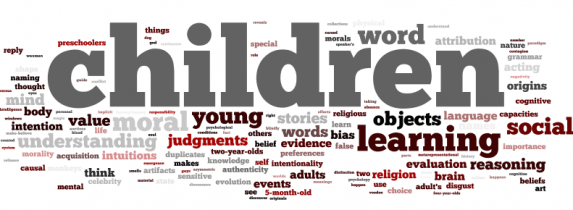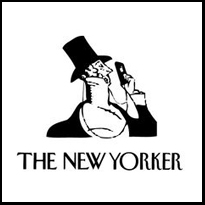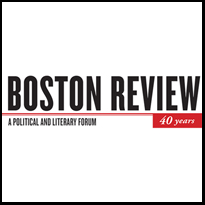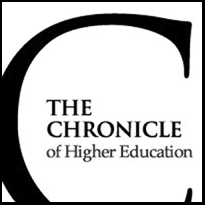| Books | General Audience | Journal Articles |
Books
Bloom, P. (2016). Against Empathy: The case for rational compassion. New York: Ecco.
Bloom, P. (2013). Just Babies: The origins of good and evil. New York: Crown.
Bloom, P. (2010). How Pleasure Works: The new science of why we like what we like. New York: Norton.
Bloom, P. (2004). Descartes’ baby: How the science of child development explains what makes us human. New York: Basic Books.
Bloom, P. (2000). How children learn the meanings of words. Cambridge, MA. MIT Press.
Jackendoff, R., Bloom, P. & Wynn, K. (1999). Language, logic, and concepts: Essays in honor of John Macnamara. Cambridge, MA: MIT Press.
Bloom, P., Peterson, M., Nadel, L., & Garrett, M. (1996) Language and space. Cambridge, MA: MIT Press.
Bloom, P. (1994). Language acquisition: Core readings. Cambridge, MA: MIT Press.
.
Selected Journal Articles
This is a selection of journal articles published prior to 2013. For recent articles and a complete list, please check Google Scholar.
Banerjee, K. & Bloom, P. (2013). Would Tarzan believe in God? Conditions for the emergence of religious belief. Trends in Cognitive Science, 17, 7-8.
Noles, N. S., Keil, F. C., Bloom, P., & Gelman, S. A. (2012). Children’s and Adults’ Intuitions about Who Can Own Things. Journal of Cognition and Culture, 12, 265-286.
Starmans, C., & Bloom, P. (2012). Windows to the soul: Children and adults see the eyes as the location of the self. Cognition, 123, 313-318.
Newman, G. & Bloom, P. (2012). Art and authenticity: The importance of origins in judgments of value. Journal of Experimental Psychology: General, 141, 558-569.
Bloom, P. (2012). Religion, morality, evolution. Annual Review of Psychology, 63, 179-199.
Bloom, P. (2012). Who cares about the evolution of stories? Critical Inquiry, 38, 388-393.
Inbar, Y., Pizarro, D.A., & Bloom, P. (2012). Disgusting smells cause decreased liking of gay men. Emotion, 12, 23-27.
Newman, G., Diesendruck, G. and Bloom, P. (2011). Celebrity Contagion and the Value of Objects. Journal of Consumer Research,38, 215-228.
Hamlin, J.K., Wynn, K., Bloom, P. & Mahajan, N. (2011). How infants and toddlers reach to antisocial others. Proceedings of the National Academy of Sciences, 108, 19931-19936.
Gray, K., Knobe, J., Sheskin, M., Bloom, P., & Barrett, L. (2012). More than a Body: Mind Perception and the Nature of Objectification. Journal of Personality and Social Psychology, 101, 1207-1220.
Bloom, P. (2011). Family, community, trolley problems, and the crisis in moral psychology. The Yale Review, 99, 26-43.
Goldstein, T.R. & Bloom, P. (2011). The Mind on Stage: Why Cognitive Scientists should study Acting. Trends in Cognitive Science, 15, 141-142.
Choe, K., Keil, F. & Bloom, P. (2011) Developing intuitions about how personal and social properties are linked to the brain and the body. Infant and Child Development.
Hamlin, J.K., Wynn, K. & Bloom, P. (2010). Three-month-old infants show a negativity bias in social evaluation. Developmental Science, 13, 923-929.
Hood, B.M., Donnelly, K., Leonards, U. and Bloom, P. (2010). Implicit Voodoo: Electrodermal Activity Reveals a Susceptibility to Sympathetic Magic. Journal of Cognition and Culture, 3-4, 391-399.
Allen, M.L., Bloom, P. and Hodgson, E. (2010). Do Young Children Know What Makes A Picture Useful To Other People? Journal of Cognition and Culture, 10, 27-37.
McCrink, K., Bloom, P. & Santos, L. (2010) Children’s and adult’s judgments of equitable resource distributions. Developmental Science, 13(1), 37-45.
Egan, L., Bloom, P., & Santos, L.R. (2010) Choice-induced preferences in the absence of choice: Evidence from a blind two choice paradigm with young children and capuchin monkeys. Journal of Experimental Social Psychology, 46, 204-207.
Bloom, P. (2010). How do morals change?. Nature, 464, 490.
Weisberg, D. S. & Bloom, P. (2009). Young children separate multiple pretend worlds. Developmental Science, 12(5), 699-705.
Inbar, Y., Pizarro, D., Knobe, J. & Bloom, P. (2009). Disgust Sensitivity Predicts Intuitive Disapproval of Gays. Emotion, 9(3), 435-439.
Danovitch, J. & Bloom, P. (2009). Children’s extension of disgust to physical and moral events. Emotion, 9(1), 107-112.
Jarudi, I., Kreps, T. & Bloom, P. (2008). Is a refrigerator good or evil? The moral evaluation of everyday objects. Social Justice Research, 21, 457-469.
Inbar, Y., Pizarro, D., & Bloom, P. (2008). Conservatives are more easily disgusted than liberals. Cognition and Emotion.
Uhlmann, E.; Pizarro, D.; & Bloom, P. (2008). Varieties of social cognition. Journal of the Theory of Social Behavior, 38, 293-322.
Bloom, P. & Gelman, S.A. (2008). Psychological essentialism in selecting the 14th Dalai Lama. Trends in Cognitive Science, 12, 243.
Markson, L., Diesendruck, G., & Bloom, P. (2008). The shape of thought. Developmental Science, 11, 204-208.
Birch, S. A. J., Vauthier, S. A., & Bloom, P. (2008). Three- and four-year-olds spontaneously use others’ past performance to guide their learning. Cognition, 107, 1018-1034,
Preissler, M. A. & Bloom, P. (2008). Two-year-olds use artist intention to understand drawings. Cognition, 106, 512-518.
Hood, B. M. & Bloom, P. (2008). Children prefer certain individuals over perfect duplicates. Cognition, 106, 455-462.
Nurmsoo, E. and Bloom, P. (2008). Preschoolers’ perspective taking in word learning: Do they blindly follow eye gaze? Psychological Science, 19, 211-215.
Hamlin, J. K.; Wynn, K.; & Bloom, P. (2007). Social evaluation by preverbal infants. Nature, 450, 557-559
Egan, L.; Santos, L. R.; & Bloom, P. (2007). The origins of cognitive dissonance: Evidence from monkeys and children. Psychological Science, 18, 978-983.
Bloom, P. (2007). More than words: A reply to Malt and Sloman. Cognition, 105, 649-655.
Gelman, S. A. & Bloom, P. (2007). Developmental changes in the understanding of generics. Cognition, 105, 166-183.
Birch, S. & Bloom, P. (2007). The curse of knowledge in reasoning about false beliefs. Psychological Science, 18(5), 382–386.
Bloom, P. & Weisberg, D. S. (18 May 2007). Childhood origins of adult resistance to science. Science, 316(5827), 996-997.
Preissler, M. A. & Bloom, P. (2007). Two-year-olds appreciate the dual nature of pictures. Psychological Science, 18, 1-2.
Bloom, P. (2007). Religion is natural. Developmental Science, 10, 147-151.
Bloom, P. & Jarudi, I. (26 October 2006). The Chomsky of morality? [Review of the book Moral Minds: How Nature Designed Our Universal Sense of Right and Wrong]. Nature, 443, 909-910.
Bloom, P. (6 July 2006). Changing our minds [Review of the book Brain and Culture: Neurobiology, Ideology, and Social Change]. Nature, 442, 27-28.
Bloom, P. (2006). My brain made me do it. Journal of Culture and Cognition, 6, 209-214.
Skolnick, D. & Bloom, P. (2006). What does Batman think about SpongeBob? Children’s understanding of the fantasy/fantasy distinction. Cognition, 101, B9-B18.
Bloom, P. (2005). Word learning, intentions, and discourse. Journal of the Learning Sciences, 14, 311-314.
Bloom, P. (14 Jul 2005). Dissecting the right brain [Review of the book The Ethical Brain]. Nature, 436, 178-179.
Choe, K.; Keil, F.; & Bloom, P. (2005). Children’s understanding of the Ulysses conflict. Developmental Science, 8, 387-392.
Bloom, P. (2004). Can a dog learn a word? Science, 304, 1605-1606.
Bloom P. (2004). Children think before they speak. Nature, 430, 410-411.
Birch, S. & Bloom, P. (2004). Understanding children’s and adult’s limitations in mental state reasoning. Trends in Cognitive Science, 8, 255-260.
Kuhlmeier, V.; Bloom, P.; & Wynn, K. (2005). Do 5-month-old infants see humans as material objects? Cognition, 94, 95-103.
Gutheil, G.; Bloom, P.; Valderrama, N.; & Freedman, R. (2004). The role of historical intuitions in children’s and adults’ naming of artifacts. Cognition, 91, 23-42.
Birch, S. A. J. & Bloom, P. (2003). Children are cursed: An asymmetric bias in mental state attribution. Psychological Science,14, 283-286
Diesendruck, G.; Markson, L.; & Bloom, P. (2003). Children’s reliance on the creator’s intent in extending names for artifacts. Psychological Science, 14, 164-168.
Diesendruck, G. & Bloom, P. (2003). How specific is the shape bias? Child Development, 74, 168-178.
Kuhlmeier, V.; Wynn, K.; & Bloom, P. (2003). Attribution of dispositional states by 12-month-olds. Psychological Science, 14, 402-408.
Pizarro, D. & Bloom, P. (2003). The intelligence of the moral emotions: A comment on Haidt (2001). Psychological Review, 110, 293-296.
Pizarro, D.; Uhlmann, E.; & Bloom, P. (2003). Causal deviance and the attribution of moral responsibility. Journal of Experimental Social Psychology, 39, 653-660.
Bloom, P. (2002). Mindreading, communication, and the learning of the names for things. Mind and Language, 17, 37-54.
Wynn, K.; Bloom, P.; & Chiang, W-C. (2002). Enumeration of collections by 5-month-old infants. Cognition, 83, B55-B62.
Birch, S. & Bloom, P. (2002). Preschoolers are sensitive to the speaker’s knowledge when learning proper names. Child Development, 73, 434-444.
Bloom, P. & Markson, L. (2001). Are there principles that apply only to the acquisition of words? A reply to Waxman and Booth. Cognition, 78, 89-90.
Bloom, P. & Keil, F. (2001). Thinking through language. Mind and Language.16, 351-367
Bloom, P. (2001). Precis of “How children learn the meanings of words”. Behavioral and Brain Sciences, 24, 1095-1103.
Bloom, P. (2001). Word learning. Current Biology, 11, R5 - R6.
Bloom, P. (2000). Language and thought: Does grammar makes us smart? Current Biology, 10, R516-R517.
Bloom, P. & German, T. (2000). Two reasons to abandon the false belief task as a test of theory of mind. Cognition, 77, B25-B31.
Gelman, S. A. & Bloom, P. (2000).Young children are sensitive to how an object was created when deciding what to name it. Cognition, 76(2), 91-103.
Giralt, N. & Bloom, P. (2000). How special are objects? Children’s reasoning about objects, parts, and holes. Psychological Science, 11, 497-501.
Bloom, P. & Veres, C. (1999). The perceived intentionality of groups. Cognition, 71, B1-B9.
Bloom, P. (1999). Language capacities: Is grammar special? Current Biology, 9, R127-R128.
Bloom, P. & Markson, L. (1998). Capacities underlying word learning. Trends in Cognitive Sciences, 2(2), 67-73.
Bloom, P. & Markson, L. (1998). Intention and analogy in children’s naming of pictorial representations. Psychological Science, 9, 200-204.
Markson, L. & Bloom, P. (1997). Evidence against a dedicated system for word learning in children. Nature, 385, 813-815.
Bloom, P. & Wynn, K. (1997). Linguistic cues in the acquisition of number words. Journal of Child Language, 24, 511-533.
Bloom, P. (1997). Intentionality and word learning. Trends in Cognitive Sciences, 1(1), 9-12.
Bloom, P. (1996). Intention, history, and artifact concepts. Cognition, 60, 1-29.









